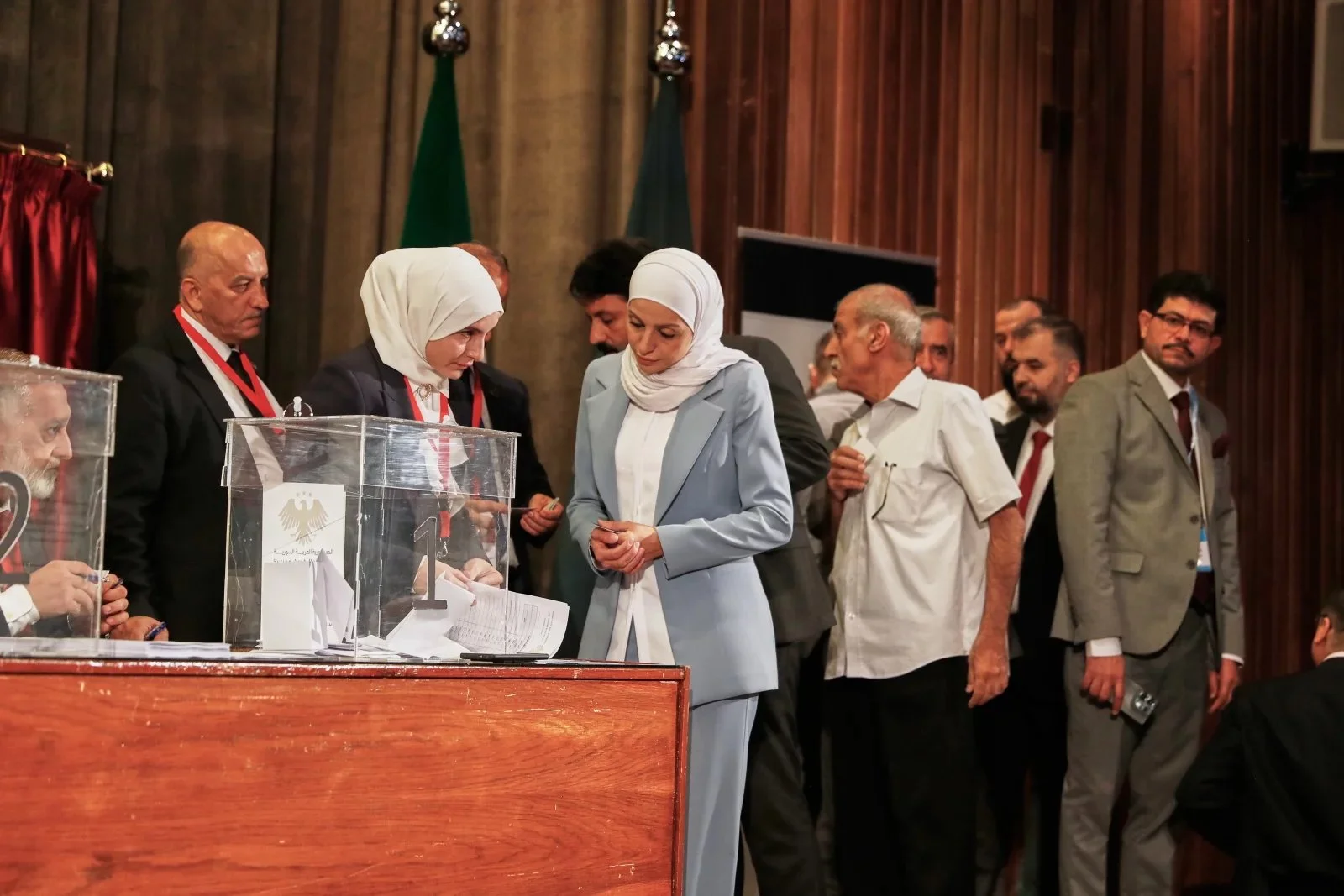Syria Monthly Report
September 2025
Executive summary
International Engagement
September saw intensified but fragile Syrian–Israeli negotiations over a proposed border security accord, mediated by the U.S. and involving high-level meetings in London and Paris. Israel’s plan envisioned demilitarized zones and airspace restrictions in southern Syria, while Damascus, citing sovereignty concerns, countered with a proposal anchored in the 1974 disengagement framework. Talks briefly advanced before stalling over Israel’s last-minute demand to open a “humanitarian corridor” to As-Sweida, a move that triggered local opposition and highlighted deep mistrust. While Washington and Jordan push for de-escalation to stabilize the south, domestic sensitivities and Israeli security conditions continue to constrain progress. The most likely outcome remains a limited de-escalation—temporary pauses in strikes and partial demilitarization—falling short of a comprehensive settlement as local tensions and sovereignty disputes persist.
Security, Governance, and Political Stability
In September, the so-called As-Sweida Roadmap marked the first coordinated attempt by Syria, Jordan, and the US to stabilize the southern governorate and investigate July’s violence. The plan outlines reopening roads, accelerating aid delivery, forming mixed local councils, and initiating a UN-assisted inquiry. However, its implementation faces serious resistance from As-Sweida’s Druze leadership and local factions, which accuse Damascus of centralizing control and rejecting international accountability. Continued mistrust between local structures – like the Supreme Legal Committee and the National Guard – and the state threatens both ceasefire sustainability and humanitarian access. While the roadmap could enable donor coordination and humanitarian planning, top-down enforcement or premature deployment of state forces risks reigniting unrest and undermining progress.
Elsewhere, political frictions persist across Syria. The fragile Damascus–SDF relationship deteriorated further as clashes escalated in Deir-ez-Zor and Aleppo, coupled with SDF-led arrest campaigns targeting perceived loyalists of the transitional government. The SDF’s fear of marginalization has intensified since Damascus gained international recognition, prompting heavier repression that erodes its legitimacy. Meanwhile, the Higher Election Committee finalized the preparations for the parliamentary elections, which took place on 5 October. The elections are framed as democratic progress, but largely entrench executive control. The process serves more to legitimize the transitional government than to broaden genuine political participation.
The Al-Sumaria evictions in Damascus, involving forced removals from disputed housing, exposed ongoing institutional weaknesses and property-rights violations under the transitional government. Collectively, these developments reveal a governance landscape marked by competing authorities, weak rule of law, and deep public skepticism – factors that continue to constrain stabilization and political transition.
Economic Stability
Syria’s economy showed signs of regional reintegration but remained fragile at home. Reopened trade routes with Türkiye and Jordan boosted transit and imports, yet domestic production lagged, deepening dependence on foreign goods and draining currency reserves. The new “Lira” aims to simplify transactions but risks confusion and inflation without fiscal reform. Meanwhile, large local donation campaigns injected vital funds for recovery but also reinforced elite patronage and regional inequality, highlighting the uneven and politically driven nature of Syria’s economic recovery.
Humanitarian Needs
Refugee and IDP returns have accelerated amid perceptions of stability and renewed international engagement with Damascus. Host countries like Türkiye and Lebanon are pushing large-scale repatriations, while Syrian authorities frame returns as signs of recovery. Yet, poor services, damaged infrastructure, and protection risks threaten to turn these movements into renewed displacement. Progress on Al-Hol repatriations signals limited international cooperation, but sustainable reintegration inside Syria remains fragile without stronger service delivery, protection mechanisms, and livelihood support.
Infrastructure and Services
Syria’s 2025–2026 school year opened with over 4 million students, but nearly 2.4 million are still out of school amid widespread damage and overcrowding. Thousands of schools remain destroyed or used as shelters, while funding shortages, high household costs, and teacher protests further strain the system. Fragmented governance and competing curricula deepen regional divides and undermine educational standards. Without major investment and coordination, Syria’s education sector risks long-term collapse, widening social and economic inequality.


